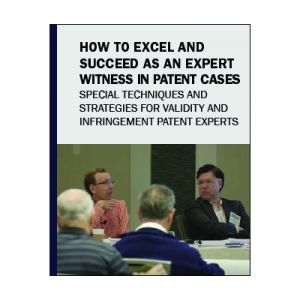Excerpted from SEAK’s Course: How to Excel as an Expert Witness in Patent Cases: Special Techniques
So that we got the three. This is the Graham Factor Steve was talking about earlier. Again, it’s another one where you don’t need to have the terms memorized. But it’s, you know, if you hear attorneys talking about the Graham Factors, this is what they’re talking about. Graham is a Supreme Court case John Deere won from back in 1966, has four elements. The first is the scope and content of the prior art. Second is the differences between the claimed invention in the prior art, third is a level of ordinary skill, and the fourth is objective considerations of non-obviousness. And I’ll go through this. One thing you might find here is this structure right here for obviousness, is how a lot of attorneys like to structure the expert reports. So if we have it in a report and you’re doing an obvious analysis, don’t be shocked if you have, you know, Roman Numeral I, this claim is obvious. And then someone is content scoping of the prior. And what you do there is you go through each of the references that are gonna be part of your obviousness opinion, and say, “Reference A discloses this, this, and this. Reference B discloses this, this, and this. And C discloses this, this, and this.” And you leave it like that. And then you go to the differences between the claimed invention and the prior art and say, “Okay, well these references that I just talked about, the difference between them are,” you know, “one of them is a stool, it doesn’t have a backing behind it.” And that’s the difference between the claimed invention and the prior art. So you’re basically setting up for the fact finder, whether it’s the jury, the patent office, or the judge, you know, this is where the dispute is. Is adding a backing to a stool, would that had been obvious? And then you talk about the level of ordinary skill. Because you’ve now set the question up, “Okay, we know what the art is, we know what the difference is between the art and the patent, would it have been obvious?” So now we have to say, “Well, who’s answering that question against the opposer?” And so you have these questions of, “What’s the level of ordinary skill?” You know, a higher level of skill, they can make bigger leaps if you will, in the combination. Lower level of skill, it’s more difficult to make those kind of leaps. And then you have to address secondary consideration. So we’ll get into that in a second because there’s a whole list of those.
